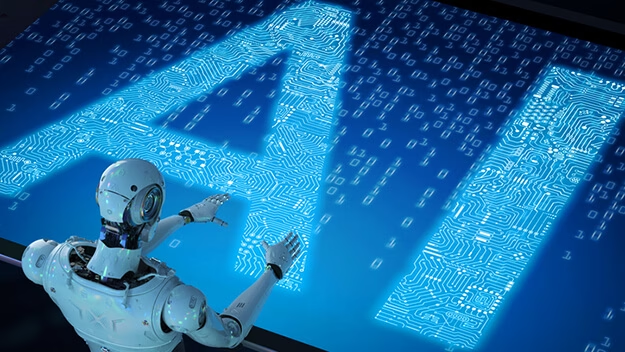- Developers
- Developer Blog
- AI Software Development
- What is Theory Of Mind AI?

profile

By Aran Davies
Verified Expert
8 years of experience
Aran Davies is a full-stack software development engineer and tech writer with experience in Web and Mobile technologies. He is a tech nomad and has seen it all.
Are you interested in knowing what Theory of Mind AI is? In this article, I will explain the Theory of Mind AI through a series of questions, and I believe this will help you to gain a better understanding of it.
In this article
- What will make Theory of Mind AI different from the AI we know?
- Will Theory of Mind AI utilize any of the already-existing AI expertise?
- What triggered the research and development into the Theory of Mind AI?
- What characteristics Theory of Mind AI will have?
- How to implement the Theory of Mind AI?
- What Theory of Mind AI could achieve?
- What challenges does the Theory of Mind AI research and development face?
- How the future of Theory of Mind AI looks like?
- Frequently Asked Questions on Theory of Mind AI
Let’s start by answering the question ‘What is Theory of Mind?’. Theory of Mind refers to a human being’s ability to understand that other people have mental states such as desires, knowledge, intentions, or beliefs.
Theory of Mind AI refers to the ability of AI (artificial intelligence) to understand and predict mental states of other agents such as human beings or other AI systems.
1. What will make Theory of Mind AI different from the AI we know?
While the Theory of Mind AI is still under research and development, we already know what will differentiate it from the other branches of AI we have seen. A computer equipped with Theory of Mind AI will better understand the entities it interacts with.
To do this, it will need to discern the needs, emotions, beliefs, and thinking of the aforementioned individual. This isn’t easy since computers will need to understand that human beings have a mind, which might have been conditioned by several factors.
This differentiates Theory of Mind AI fundamentally from other AI and Machine Learning (ML) algorithms. Read more about this in “7 types of artificial intelligence”.
2. Will Theory of Mind AI utilize any of the already-existing AI expertise?
Theory of Mind AI will certainly utilize AI and ML expertise already developed.
E.g., ML involves training computers using supervised, unsupervised, semi-supervised, or reinforced learning algorithms, as I have explained in “Machine learning in future software development”. Theory of Mind AI will also involve training computers. E.g., it could involve building a neural network, however, such a neural network for Theory of Mind AI will have a key difference.

Get a complimentary discovery call and a free ballpark estimate for your project
Trusted by 100x of startups and companies like
It will use meta-learning to build models about the agents it comes across. This neural network will observe the behaviors of these entities, therefore, it will acquire a prior model of these behavior patterns.
Such neural networks can then proceed to integrate rich predictive analytics, which they will use on this acquired behavior data. You can read more about this in “Machine Theory of Mind”.
3. What triggered the research and development into the Theory of Mind AI?
AI and ML have given us plenty, e.g., chatbots, image recognition capabilities, natural language processing capabilities, etc. I have earlier explained the value that these capabilities offer, and you can read “5 ways AI will change your business in the near future” for more examples.
Take for example the case with image recognition capability. Law enforcement and security agencies can keep a country safe with the help of facial recognition software, as I have explained in “How to build facial recognition software”. Such recognition software uses the image recognition capability of AI.
While these are impressive, society needs more to make a quantum jump in its productivity. Any organization has workers, and workers bring their beliefs, emotions, dreams, and apprehensions to the workplace. In other words, they bring their mind to the workplace!
The mind of a worker significantly influences his or her effectiveness at work, and an organization needs to harness its employee’s emotions positively to deliver superior performance. AI needs to create such “co-workers” for organizations, and that’s much more than the chatbots!
AI can achieve this only when the artificially-intelligent “co-workers” can understand the emotions, beliefs, aspirations, etc. of their human co-workers. This is possible only when the AI-powered “co-workers” have their theory of mind.
This is the key requirement that Theory of Mind AI seeks to fulfill. You can read more about this in “Truly intelligent A.I. must have a “Theory of Mind””.
4. What characteristics Theory of Mind AI will have?
Since Theory of Mind AI is still under research & development, its characteristics will likely evolve. However, based on the available information at the time of writing, we can anticipate that it will have the following characteristics:
- Computers equipped with Theory of Mind AI will infer the objectives of entities around them from visible cues.
- A system powered by Theory of Mind AI will answer simple “what if” questions about potential actions that entities around them might undertake.
- Theory of Mind AI-powered systems will be able to simulate the consequences of their actions.
- A robot or a system powered by Theory of Mind AI will be more communicative with human beings. E.g., such robots/systems will be able to explain their actions, and this is different from the current generation of AI.
- Theory of Mind AI will consist of ML systems that can explain their decisions in languages that human beings understand.
- A robot/system equipped by Theory of Mind AI should be able to understand the intent of another similar robot/system.
Read more about these characteristics in “How to make a robot use Theory of Mind”.
Hire expert developers for your next project
1,200 top developers
us since 2016
5. How to implement the Theory of Mind AI?
As research and development proceeds on Theory of Mind AI, examples of implementing it are emerging. Let’s review one such example.
This project in this example is one conceived by Neil Rabinowitz, a research scientist at DeepMind in London, and his team. This team has created a Theory of Mind AI-powered system named “ToMnet”, i.e., “Theory of Mind net”.
ToMnet observes other AI systems and learns about how they work, and it consists of 3 artificial neural networks (ANNs). An artificial neural network is a kind of an ML system, and it’s modeled after the human brain and how it learns. ANNs use algorithms that enable computers to learn by incorporating new data, and you can read more about ANNs in “What is a neural network?”.
Each of the 3 ANNs in ToMnet has computer programs, e.g., algorithms, moreover, they have connections that learn from experience. One of these ANNs learns the tendencies of the AIs under observation, based on what they did earlier.
The 2nd ANN builds an understanding of the “beliefs” of the said AIs. Taking inputs from the outputs of the 1st and 2nd ANNs, the 3rd ANN predicts the next moves of the AIs under observation. You can read more about this project in “Artificial intelligence has learned to probe the minds of other computers”.
6. What Theory of Mind AI could achieve?
Let’s now see what value Theory of Mind AI could bring to the table. It could help in various way, e.g.:
- Alan Winston, a professor in robotic ethics at the University of West England believes that Theory of Mind AI will enable AI to understand what people and other robots need. This could unlock value that the current generation of AI-powered systems can’t deliver. Read more about his assertions in “‘Theory of mind’: why artificial intelligence needs to understand how we think”.
- Going beyond the intelligent automation of simple to complex tasks, Theory of Mind AI will enable robots/systems to interact socially. This could spawn entirely new use cases. Read more about this in “Artificial intelligence: definition, types, examples, technologies”.
From the above, it follows that if robots/systems are ever going to noticeably augment the human workforce in society, they need to be equipped with Theory of Mind AI. Only then can they interact effectively within a social environment.
7. What challenges does the Theory of Mind AI research and development face?
Research and development concerning Theory of Mind AI face several challenges, and these are as follows:
- How many verbal and non-verbal cues should a Theory of Mind AI-powered system consider for judging the emotions of a human being or a robot? What are the various kinds of such cues? Researchers working on the Theory of Mind AI are still trying to resolve these questions.
- Theory of Mind isn’t a fully developed science yet. Scientists are still working to figure out how human beings understand the emotions and beliefs of others, and why they sometimes incorrectly understand them. While researches and developments into the Theory of Mind AI are continuing, this gap in formulating the theory of mind impacts them. Read more about it in “Analogues of mental simulation and imagination in deep learning”.
- Theory of Mind involves building mental models of other human beings. How would Theory of Mind AI-powered systems use meta-learning to build such mental models of human beings and robots? This aspect is still under research and development, and you can read more about it in “Using AI to build better human-machine teams”.
8. How the future of Theory of Mind AI looks like?
Given that research and development on Theory of Mind AI are still ongoing, it’s hard to predict how this branch of AI will fare. However, if the Theory of Mind AI matures, then it will create the following:
- Machines that think;
- Machines that experience emotion;
- Conscious machines.
Such innovations can have a large impact beyond the value that AI currently offers. E.g., robots can be responsive and understanding co-workers of human beings in the workplace. Read “The future and philosophy of machine consciousness” to learn how the future of Theory of Mind AI might look like.
Hire expert developers for your next project
Planning to use AI to improve the functioning of your organization?
While Theory of Mind AI is under research and development, you can use AI already available in the market to improve the functioning in your organization. The technology has a high potential, however, skills like AI, ML, etc. are niche.
Projects involving such technology are complex, therefore, I recommend that you take help from a reputed software development company like DevTeam.Space.
DevTeam.Space is an innovative American software development company with over 99% project success rate. DevTeam.Space builds reliable and scalable custom software applications, mobile apps, websites, live-streaming apps, speech recognition systems, ChatGPT and AI-powered solutions, among others.
DevTeam.Space supports its clients with business analysts and dedicated tech account managers who monitor tech innovations and new developments and help clients design, architect, and develop applications that will be relevant and easily upgradeable in years to come. Contact us to learn how we can help you!
Frequently Asked Questions on Theory of Mind AI
In the sense that we humans define a mind, no. However, AI is able to learn in a way that until recently, conventional computer programs could not. The debate on whether AI has a mind and is conscious is going to grow ever stronger.
Theory of Mind is a state of cognitive understanding that involves the ability to think about abstract mental states of ourselves and others. Understanding emotions is a typical example of this.
The answer to this question is always arguable. However, the most sophisticated AI programs are currently chatbots that have demonstrated immense sophistication and have even invented their own language in some cases.

Alexey Semeney
Founder of DevTeam.Space
Hire Alexey and His Team To Build a Great Product
Alexey is the founder of DevTeam.Space. He is award nominee among TOP 26 mentors of FI's 'Global Startup Mentor Awards'.
Alexey is Expert Startup Review Panel member and advices the oldest angel investment group in Silicon Valley on products investment deals.


